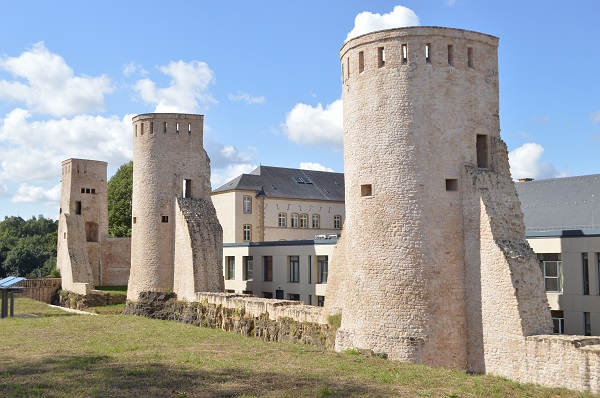
Luxembourg Minister of Culture, Maggy Nagel, today inaugurated the extension of the historical circuit Wenzel which, following restoration work conducted by the Service des Sites et Monuments, will now incorporate the medieval towers of Rham.
The Circuit Wenzel, described as an 'exemplary cultural itinerary' by the Council of Europe, is a historical walk provided by the Luxembourg City Tourist Office (LCTO) which connects the valley and plateau of Luxembourg City, allowing visitors to make a 1000 year journey through time. The walk offers walkers the chance to experience the UNESCO World Heritage Site of the Bock casemates, as well as views of the Alzette valley, the Old Town, and the wall enclosure of 14th Century Duke of Luxembourg Wenceslas II, after whom the trail was named.
In 2010, the Service des Sites et Monuments Nationaux (SSMN) collaborated with the Robert Becker architectural bureau to begin a €5,4 million project on the towers of the Plateau du Rham and the ravelin of Vauban to preserve Luxembourg's heritage site. Director of the SSMN, Patrick Sanavia, led a press tour around the site, explaining the architectural and cultural significance of the new Circuit Wenzel extension.
This area is steeped in history, with the fortifications dating back to the Middle Ages and combining medieval architecture with the mastery of modern era fortification from the reign of Louis XIV to the more recent Prussian occupation. With the inclusion of the ravelin of Vauban in the 5,5km, three hour walk, visitors will now get the opportunity to view the City from a whole new vantage point from the hills of the ravelin, where a 360° engraved map panel provides information on the various surrounding areas that can be seen in the distance, before visitors are led to the top of a medieval tower to learn more about the history of defensive architecture in Luxembourg City.
The ravelin was originally constructed after French military engineer Vauban took the fortress in 1684, widening the gap in front of the medieval walls by about four metres and building a moat with which to protect the ravelin. Later, military engineers of the Prussian empire made further modifications to the fortification, removing parts of the right and left sides of the Rham ravelin to make way for the railway line towards Ettelbrück which was established on 21 July 1862.
Minister of Culture Maggy Nagel emphasised the significance of the fortifications, not simply from a a cultural aspect, but also from the point of view of Luxembourg's tourism industry. This was soon evidenced as Luxembourg's hop on-hop off sightseeing train carrying visitors around the City passed under the archway of the Tour Jacob.
The Tour Jacob itself has been reopened and with it an audiovisual show and the addition of several information panels, offering visitors further insight into the military and political upheavals which shaped the Grand Duchy of Luxembourg.
Photos by Sarah Graham (2nd one down: L-R Director of Service de Sites et Monuments Nationaux, Patrick Sanavia ; Minister of Culture Maggy Nagel)








